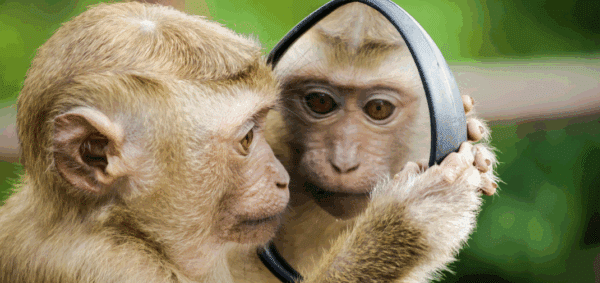Rebranding Mistakes: Washington Commanders Miss the Mark

Updated: February 25, 2022
On February 2nd, the NFL’s Washington Football Team (formerly “The Redskins”) announced their new name:
The Washington Football Team is now … the Washington Commanders. pic.twitter.com/2oVLCBJANX
— Adam Schefter (@AdamSchefter) February 2, 2022
How Did We Get Here?
The Commanders’ rebranding was the culmination of a two year process that began when they changed their name amid pressure resulting from the Black Lives Matter protests of 2020.
However, long before 2020 there were many calling for the team to change their offensive name, including fans, media, DC-area residents, and most importantly indigenous people’s groups.
It is also worth mentioning that during this rebranding process, the team has also been embroiled in allegations of sexual harassment and a toxic workplace culture. In the intervening years between now and 2020, the team adopted The Washington Football Team as its placeholder moniker.
They assured their fanbase that their rebranding process would produce a new name and brand identity that they could be proud of and that honored their heritage.
Why Rebrand?
The marketing agency T.E. Digital sums it up well: An organization’s branding is their identity. It sets them apart from the competition, presents a memorable impression, and sets expectations.
Most importantly, in the case of the Washington Commanders, it projects your values as an organization.
T.E. Digital presents many reasons why organizations consider engaging in a rebranding process, including keeping up with changing styles, a changing customer base, and changes in leadership. The reason that applies most specifically to the Washington Commanders’ is repositioning, which I believe is important to highlight here:
As a company matures, it grows in the marketplace, evolves over time and may be something much different than what it was when it first began.
The original identity could become more of a liability and hold the company back. Shifting emphasis puts the brand in a new light.
That last point is crucial in understanding why I believe the Washington Commanders’ rebranding missed the mark.
Rebranding Goals
The Washington Commanders spent approximately two years on their rebranding process. Before we bash them, let’s take a look at what the rebranding means to them.
According to the statement released to the press by the Commanders:
This new identity embodies the most powerful aspects of Washington’s story by paying tribute to the team’s rich history and championship culture, personified by mission-driven players who take command, forge success and break barriers on and off the field.
The result of an 18-month collaborative process with fans, alumni, players, community leaders and stakeholders across the D.C., Maryland and Virginia (DMV) area, Commanders brings to life the commitment to service and leadership that defines the DMV community.
Importantly, the team’s new identity also represents the values that bond the Burgundy & Gold family, including resilience, grit, tradition and unity, and honors the progress and potential of its present and future.
Based on this statement, I would summarize their rebranding goals as follows:
- Link the team to the nation’s capital and the national identity by invoking the military
- Tie the new identity to the team’s history
- Use the new identity as a loud statement that the organization has made meaningful changes to their values in order to address their controversial past and ongoing scandals
- Make the fanbase and stakeholders feel like their voices were heard in the process
Using that summary, we can point out ways in which their rebranding missed the mark, starting with the largest area of controversy: the name.
What’s In A Name?
The process to choose a new name involved a lot of fan input, both solicited and unsolicited. Last month, the team announced a shortlist of candidates.
One of the most popular names for fans among these choices was the Red Wolves, or Wolves. Unfortunately, the team posted an article written by their team president why they couldn’t use any variation of Wolves in their new name due to trademark issues.
Fans were disappointed, but they had to take the team at its word. However, their stated reasoning is undermined a bit when it was pointed out that their new name and motto seems to have been taken from a now-defunct team in San Antonio:
As if Washington couldn’t have botched the name enough-
They literally stole their motto from the AAF’s San Antonio Commanders.
Zero originality. #TakeCommand pic.twitter.com/0k2Y2oBGPu
— RJ Ochoa (@rjochoa) February 2, 2022
So a team with very little trust among their own fanbase and a litany of perception issues has seemingly plagiarized an already existing brand, undermining their stated reasoning for not choosing a fan favorite name, therefore potentially making their fans feel like their input doesn’t matter.
Is There A Better Name?
If they really wanted to tie their new identity to the team’s glory days and make the fans feel heard at the same time, the Red Hogs would have been a much better choice.
The term Hogs has been a part of the franchise’s identity for decades, and is derived from the name for super fans of the team. On top of it being an easy way to give the fans a tangible sense of ownership in the team’s identity, it is ripe with fun imagery for logos and jerseys.
The Red Tails is another name that didn’t even make the team’s shortlist and that has long been popular with more progressive-leaning fans and fans of color.
The Red Tails was the nickname used by the legendary Tuskegee Airmen, the majority African-American fighter pilot squadron that fought in World War II. The name Red Tails achieves almost all of their rebranding goals.
It is maybe the most famous military unit in our nation’s history, which links the team to our national identity and military service. ‘Red’-tails sounds like their old name, and would have tied easily into their historic burgundy and gold color scheme.
Most importantly, it would be a very loud statement that they understand the mistakes they’ve made in the past and are making an effort to be more inclusive of their sizable POC fanbase.
Plus, Red Tails also gives you so many cool things that you can do with the logo and jersey designs.
What About the Logo?
The issue with the Commanders’ former identity didn’t stop at just the name. Their old logo was also extremely problematic. For their rebranding, they really needed to address this large area of concern in order to set new expectations.
This is what the team says about their new logo set:
The primary logo of the Washington Commanders is a powerful “W.”
This symbol carries forward an element of the Washington Football Team chapter in the franchise’s history and acknowledges the team’s deep Washington roots, while the W’s angled cuts, bolded lines and serifs signify forward movement and progress.
The slanted elements of the stripes bordering the “W” are inspired by military rank insignia, helping to infuse the familiar mark with elements of the team’s new identity. In the word mark, “WASHINGTON” introduces the tall and proud letters of the team’s name.
The cuts of the “C” lead the eye across the mark and the two stripes that frame the name pay homage to the D.C. flag and give the mark a sense of power and authority.
What’s Wrong With the Logo?
My biggest issue with their primary logo is that it isn’t clear what the connection is to their name. According to them, the “W” symbol is meant to resemble military insignia. But I mostly see an “N” with a useless little vestigial limb.
I thought that given I am not a member of the military, I might be missing context that would be clear to an active or former military member. So, I asked a family member — a retired Army staff sergeant of 20 years — to show me what I’m missing.
He said that there was no clear link to him between the “W” and any insignia that he recognized. At most, the franchise has used some version of a “W” off and on over the years in their branding.
There are also issues with the design of their crest logo. The years on the logo are meant to mark the seasons in which they won championships. But the years on the logo are the years the championship game was held, not the common usage which is the year the season started.
That’s just sloppy.
Update as of February 25, 2022:
The Commanders have updated their crest logo to address this discrepancy.
Then there is the word mark, which they say pays homage to the D.C. flag by using two stripes to frame the name Washington.
Sure, I guess, but the execution of it is so basic.
There are better examples of ways the DC flag has been integrated into a team’s branding, like this Washington Capitals jersey. The stars and stripes are actually embedded into the logo and uniform design in a visually interesting way, not just two bars slapped on top of a word.
There are also multiple teams in the NFL that use their word mark in very similar ways, specifically on their jerseys:
Nike is out of design ideas. pic.twitter.com/zuIYH4yF28
— Patrick Wall (@ByPatrickWall) February 2, 2022
User Testing Fail
Then there is the common mistake of unintended messages or symbols in a new logo or name.
It usually comes down to not doing enough research and user-testing, which is time and cost intensive, so not a lot of smaller firms have the resources to do a long rebranding exploration process.
But if you’re an NFL team valued at $4.2 billion, there’s no excuse to pick a name that manages to have both unintended messages and symbols:
let’s not focus on whether the Washington Commanders is a good name but instead focus on the fact a red and yellow team located in Washington DC named itself something that can be shortened to Commies
focus on the hilarious aspect of NO ONE realizing this over 2 years pic.twitter.com/b1b5pCcYiC
— Tyler Conway (@jtylerconway) February 2, 2022
Conclusion
The Washington Commanders new identity is fine.
Over the course of time, like with most rebrands, reactions will settle, opinions will become less harsh, and it will seem like the Commanders were always the Commanders.
But it feels like a huge missed opportunity for a franchise currently struggling with scandals and a tarnished public image to project a new image that speaks to how they are committing themselves to changing who they are as an organization and what they value.
And it seems like their rebranding process was tarnished by the same kinds of issues the franchise has always had by taking the easy road in wrapping itself in the stolen valor of the U.S. military to burnish its own image while making ethically questionable decisions behind the scenes.
In my opinion, the best thing to come out of their rebranding process is this meme:
New Mascot for the Washington Commanders #TakeCommand #GIJoe pic.twitter.com/N4Is3EMyuv
— Eric Pesola (@epesola) February 2, 2022
Are you looking to engage in a rebranding process that actually achieves your organizations goals for a new brand? Let’s talk!


